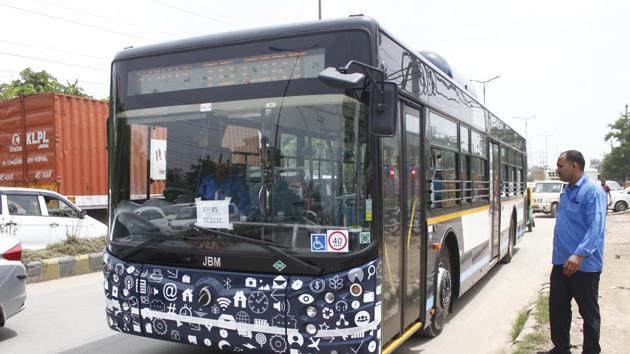Three issues need to be addressed to ensure success of Gurugram bus service
A good public bus system is the backbone of a city. A bus system goes beyond providing transport. It has the potential to transform a city.
Last week, Haryana Chief Minister Manohar Lal Khattar formally launched the much-awaited and long-delayed city bus service in Gurugram. The city had been working on developing a public bus system for almost a decade but somehow it was never on the priority list of the authorities. Though buses are being run on one route — Route 212, a 25-km circular route connecting Basai Chowk to Huda City Centre, it is a great step towards developing a public transport for the Millennium City.

A good public bus system is the backbone of a city. Globally, even those metropolises that have excellent Metro networks, also have good bus systems. A bus system goes beyond providing transport. It has the potential to transform a city. However, for this to happen in Gurugram, three critical issues need to be addressed.
1. Scaling is critical
The success of any transport system comes only with the desired scale. Therefore, while pilot initiatives can give an insight, the success can only be measured with the proper scale of the service. Based on the population estimate, Gurugram needs 1,000 to 2,000 buses, whereas the current plan is to have 500 buses running in a year’s time. Though some buses are better than none, the number needs to be revised on two counts. First, one year is a long time to scale the operations to 500 buses and the current euphoria might gradually fade if the services couldn’t be expanded for all citizens to avail them. Therefore, it is important to speed up the deployment of these 500 buses. Second, 500 buses will not suffice the purpose and the visible impact will only be felt when the system will have the required coverage. Therefore, the city should immediately start planning to roll out at least 1,000 buses, if not more.
2. Monitoring of operations
From the examples available in the country, it has been seen that the biggest mistake the bus companies (both public and private) make is not ensuring proper monitoring of operations. The buses have GPS and electronic ticketing machines which generate rich data. But the bus companies don’t use them for tangible purposes and they are dumped and stored with no public access or are just used for compliance purposes. As a result of this, those areas that require more buses don’t get them, resulting in crowding, while on the other hand empty buses keep running in other parts of the city. This is where Gurugram needs to be careful and develop a robust monitoring mechanism. One way to do it would be opening up the real-time bus location data to the public, or in technical terms, opening up the real-time GTFS feed. This will achieve two things, one it will give private developers the information to develop journey planning apps. Second, it will result in community engagement to monitor the operations, which can further be boasted by opening the ridership data as well. However, this will not be easy as it does not give room to bus companies to play with data.
3. Infrastructure is the key
Popularly, people think that running public transport is all about procuring buses and putting them on road. But what they forget is the fact that the infrastructure is what that makes or breaks public transport. For example, in 2008-09, the central government started the programme of funding buses to cities under the Jawaharlal Nehru National Urban Renewal Mission (JNNURM) programme where 15,000 buses were given to about 60 cities. However, at many places, the city buses failed to take off and in many cases, in less than a year, the buses got grounded. The reason was simple: all these cities did not have supporting infrastructure to aid the operations of these buses, whereas cities that had the required infrastructure easily scaled up the operations. Therefore, Gurugram may have launched the bus service from an under-construction depot, but the success will only come if the infrastructure is put right. Therefore, infrastructure is the key because these depots and workshops help in maintenance and operations of buses, terminal, stops and interchanges help in integration and thus improve ridership.
The launch of the city bus service is a good start, and everyone involved needs to be congratulated for the effort. However, we need to remember that it is just the beginning and the real action will start now.
If Gurugram is able to offer a good quality bus system, and it has the potential to do so, it will be a big step in the direction to get rid of the infamous tag,‘Gurujam’.
(Amit Bhatt is the director- integrated transport, WRI India)
Stay updated with all the Breaking News and Latest News from Mumbai. Click here for comprehensive coverage of top Cities including Bengaluru, Delhi, Hyderabad, and more across India along with Stay informed on the latest happenings in World News.
Stay updated with all the Breaking News and Latest News from Mumbai. Click here for comprehensive coverage of top Cities including Bengaluru, Delhi, Hyderabad, and more across India along with Stay informed on the latest happenings in World News.






